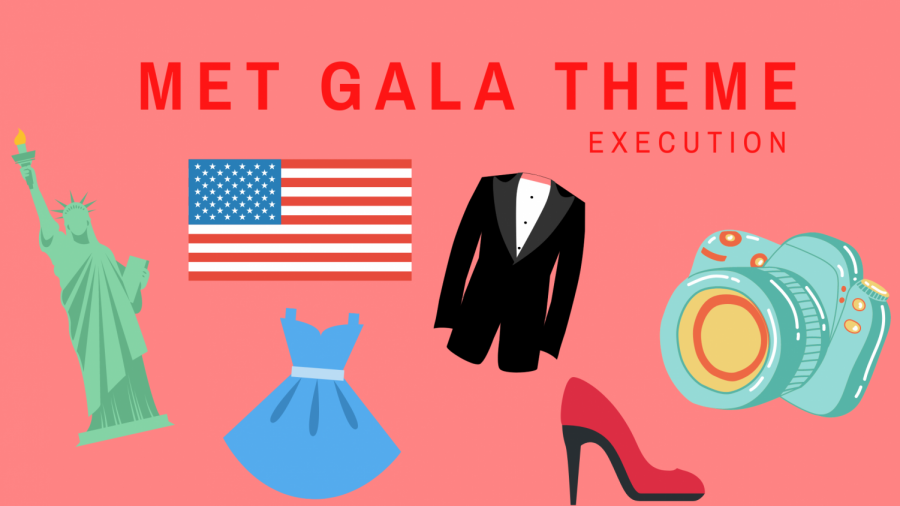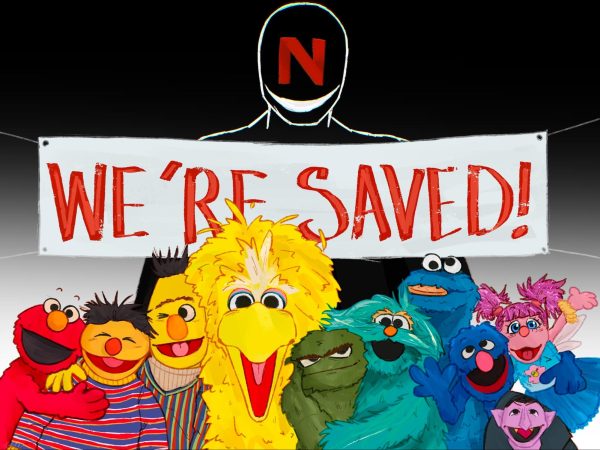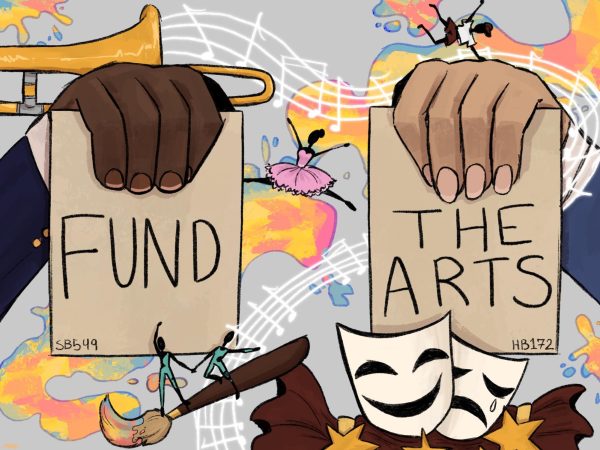‘Who gets to be American?’ Met Gala attempts to answer
On Sept. 13, celebrities from all over the world arrived at the Met Gala dressed according to their interpretation of the the Gala’s theme, “American Independence.”
The Met Gala — arguably the most anticipated fashion event of the year– took place Sept. 13. Displaying the clash of fashion, art, and politics, this year’s theme was “In America: A Lexicon of Fashion”, with the central question being “who gets to be American?”
This is an extremely relevant question at the moment. Recently, pictures of US Border Control whipping Haitian immigrants were released, drawing massive backlash. There was an eerie similarity between those photos and historical drawings of the antebellum South.
With the rise of COVID-19, we have also seen a rise in Asian hate crimes.
This all leads us to question who gets to be American. Is it simply based on your country of birth? If so, then why are Asian Americans, born in the US, getting told to “go back to your country”?
Does your culture make you American? If so, then why are the cultures of indigenous peoples, who have been here the longest, not considered American?
This is a question that could have posed a variety of answers.
However, in usual Met Gala fashion, most celebrities either ignored the theme or gave surface-level interpretations of it.
Kendall Jenner
The dress she wore was made by Givenchy, based off of Audrey Hepburn’s dress “My Fair Lady.” It was a sheer floor-length dress covered in crystals with a big crystal choker and while the dress was gorgeous, it wasn’t quite American.
For one thing, Audrey Hepburn was a British citizen and “My Fair Lady” was set in England. Furthermore, Givenchy, a French fashion house, made the dress.
Although… there is honestly nothing more American than taking from others and claiming it as your own, so she deserves credit for that.
Kim Kardashian
Kim Kardashian’s outfit was definitely one of the most controversial of the night. She wore a skin tight black dress that covered her entire body, including her face.
Kim Kardashian is an iconic symbol of American celebrity culture and a vital piece of our iconography. In fact, what is more truly American than Kim’s rise to fame?
Now with the rise of influencer culture, youth see the American dream as a rise to fame- and ultimately wealth- through social media. That is exemplified (and arguably pioneered) by “Keeping Up With the Kardashians” who managed to capture the eyes and wallets of the American people for over 10 years through clever social media tactics and manufactured drama.
When Kim showed up at the Met Gala completely covered up, it showed a bold interpretation of our American popular culture. Even though you cannot see her face, she is instantly recognizable. Her hourglass figure is enough for you to know who she is.
Through her outfit, she is not referencing a historical figure, but herself. Her influence on American trends is powerful enough to be cultural phenomena, which ultimately ties back to the theme “America: A Lexicon of Fashion” since her actions are powerful enough to shift the course of American fashion.
Lupita Nyong’o
Lupita Nyong’o killed it. She showed up to the Met Gala in an all denim gown which managed to reference America’s past and the central question of the night in a subtle yet effective manner.
There is no denying that denim is a staple in American fashion. Cotton and indigo, both materials for denim, were cultivated by enslaved people in the American South. Black people have always been a vital part of America’s clothing production and trend cycle, often not getting the credit they deserve.
Lupita Nyong’o’s dress brings to mind the Three-Fifths Compromise, which stated that only 3/5ths of a state’s enslaved population would count towards the state’s total population.
This references the central question of the night, “who gets to be American?”
Eslaved people were brought to America to serve as cultivators of cotton and indigo. Those enslaved people would later have children of their own, and while those children were technically American citizens since they were born in America, they were not granted the same rights as white men under the American Constitution. Moreover, according to law they were not even granted the right to be a whole human, they were only 3/5ths of a person.
Metaphorically, Lupita reveals an unsettling truth. Slaves, who were the backbone of the early American economy, cultivated cotton and indigo, which was later used to create denim, an American staple. However, at that time slaves had their constitutional rights taken away from them. They were not allowed to be American. Even more disheartening, they weren’t treated as humans.
“In America: A Lexicon of Fashion” was a broad theme that could have inspired countless interpretations, but some still managed to fall short. However, there manages to be a delightful ironic twinge to the whole ordeal. Americans lacking the self-awareness to reflect on our own culture and fashion history is the most American thing ever.
Your donation will support the student journalists of Bellaire High School. Your contribution will allow us to purchase equipment and cover our annual website hosting costs.







